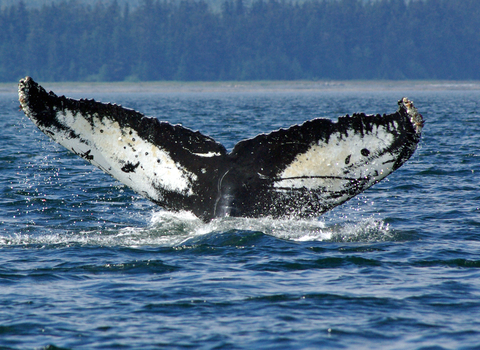
Humpback whale ©Gillian Day
Humpback whale
The humpback whale is making a comeback, with more and more individuals being seen in UK seas every year. They are well known for their acrobatic behaviour - so don't be surprised to see them breach clear of the water!
Scientific name
Megaptera novaeangliaeWhen to see
January to DecemberTop facts
Category
Stats
Length: Up to 18m Weight: up to 40 tons Lifespan: 80-90 yearsConsidered of Least Concern on the IUCN Red List of species and a Priority Species under the UK Post-2010 Biodiversity Framework.
